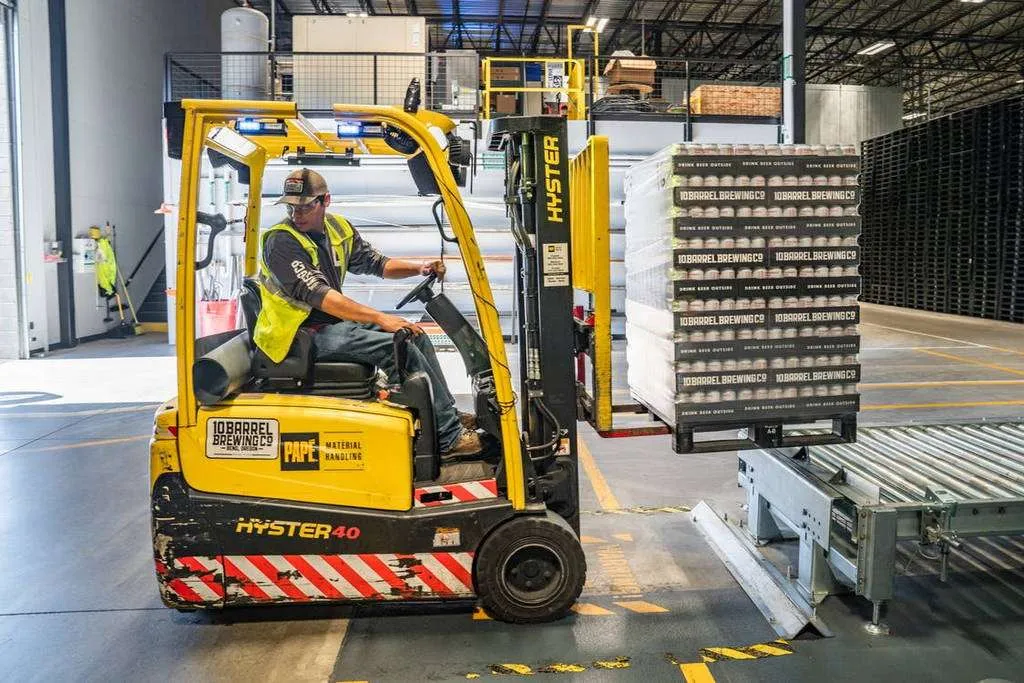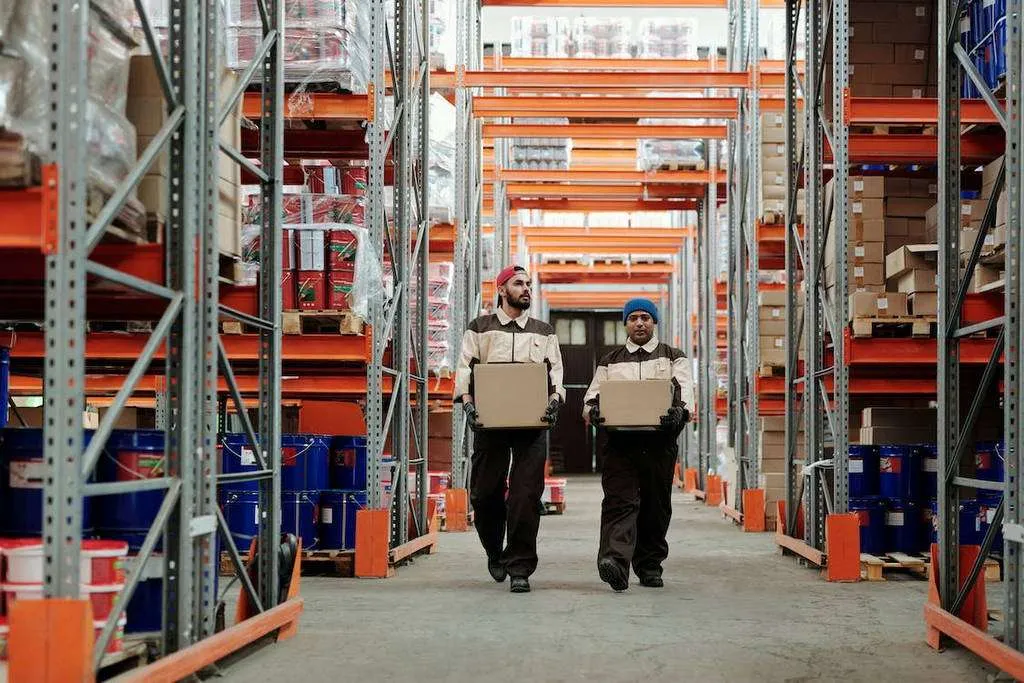As an Amazon seller, you’re always looking for ways to improve your supply chain and boost your sales.
However, slip-ups in this area can be costly and damage your business – so you always need to be aware of the common supply chain mistakes that can hold your growth back.
These mistakes include:
- Not having a clear inventory management strategy…
- Not planning for seasonal fluctuations in demand…
- Not optimizing your Amazon supply chain correctly…
- And many more!
By avoiding these errors, you’ll be able to keep your business running smoothly and efficiently – while driving profitable growth. Let’s go further in-depth to explain each one (and what you can do to avoid them).
Use this outline to skip to any section of this page:
- Mistake #1 – Relying on your supplier to handle inspections
- Mistake #2 – Using Amazon’s FBA prep service
- Mistake #3 – Doing FBA prep in-house
- Mistake #4 – Neglecting to track inventory levels and sales data
- Mistake #5 – Failing to account for seasonality in sales
- Mistake #7 – Not tracking shipping times and rates
- Mistake #8 – Over-ordering inventory that goes unused
- Mistake #9 – Failing to plan for inventory stockouts
- Supply Chain FAQs for Amazon Sellers
Mistake #1 – Relying on your supplier to handle inspections
Many Amazon sellers believe that their supplier is always responsible for product inspections. Not true.
This can be a costly mistake, as suppliers often still have defective products. In order to avoid these costly mistakes, it’s important for Amazon sellers to handle their own inspections.
This means being proactive in checking products for defects, and not relying on your supplier to do this for you. By doing your own inspections, you can avoid having to deal with defective products and the associated costs. However, here’s an alternative:
Instead, use an FBA prep center to handle inspections
By using a prep service like ZonPrep for inspections, you can be sure that your products will be ready to ship to Amazon as soon as they arrive at the center.
This can save you time and hassle, and it can also help ensure that your products are in compliance with Amazon’s requirements.
- Overall, these centers offer a range of services, from product inspections to labeling and packaging.
- If you’re considering using an FBA prep center, it’s important to do your research first.
- Not all centers offer the same services, so be sure to understand their offerings and compare prices before choosing one.
Keep in mind – the cost of using a prep center will be a tad more than running your own FBA prep in-house, but it’s a major time-saver and allows you to focus on growing your business (instead of managing and working on the mundane tasks that can be outsourced).
Overall, using an FBA prep center can be a helpful way to streamline your shipping process and ensure that your products are ready to go when they arrive at Amazon. If you’re considering using one, be sure to do your research and compare prices before making a decision.
Mistake #2 – Using Amazon’s FBA prep service
For Amazon sellers, relying on Amazon’s FBA prep service can be a costly mistake.
Although Amazon does offer the prep service, it doesn’t put a major focus on it, which means that sellers may not be getting the best possible service. In addition, the prep service can be quite expensive, particularly for smaller sellers.
There are a number of other prep services available that are much more affordable. Sellers would be wise to investigate these services before deciding to use Amazon’s prep service. By doing so, they can save themselves a lot of money and ensure that their products are properly prepared for shipment to Amazon.

Mistake #3 – Doing FBA prep in-house
When it comes to preparing products for Amazon FBA, many sellers prefer to use an FBA prep service, rather than handling it in-house themselves – which often turns out to be a supply chain mistake. There are a number of reasons for this:
FBA prep services have the experience and expertise necessary to do the job right. They know what needs to be done in order to get products ready for shipment to Amazon, and they have the tools and resources to do it quickly and efficiently.
Using an FBA prep service can save sellers a lot of time and hassle. Preparing products for FBA can be a lot of work, especially if you’re doing it yourself. A good prep service will take care of all the details for you, so you can focus on other aspects of your business.
They can help protect your products and your business. If something goes wrong during the preparation process, a prep service will be there to prevent future issues – or they’ll take responsibility if they screw up. If you run prep in-house, you’re not covered in any way. This can help minimize the risk of costly mistakes or product damage.
Overall, there are many good reasons to use an FBA prep service when preparing products for Amazon FBA – but you should read our guide on in-house vs. FBA prep services first to help you decide.
If you’re looking to streamline the process and minimize the risk of errors, a prep service can help mitigate and prevent the many supply chain mistakes for Amazon sellers.
Mistake #4 – Neglecting to track inventory levels and sales data
When it comes to Amazon, inventory levels and sales data are key aspects that should not be neglected.
Not only does this information help you keep track of what is selling and what isn’t, but it can also help you make better decisions when it comes to pricing and stock.
- For example, if you notice that a particular product is selling more quickly than you anticipated, you may want to increase your stock for that item.
- Alternatively, if a product is not selling as well as you had hoped, you may want to consider lowering the price or discontinuing it altogether.
- Tracking inventory levels and sales data can also help you identify trends.
- Another example – if you notice that a certain type of product is consistently selling well, you may want to consider adding similar items to your inventory.
In short, by tracking inventory levels and sales data, Amazon sellers can make more informed decisions that will help them improve their business. We cover more of this here: Top 7 Inventory Management Tips for Amazon Sellers
Mistake #5 – Failing to account for seasonality in sales
When Amazon sellers don’t account for seasonality in their sales, they may be setting themselves up for failure.
- Seasonal fluctuations in demand can cause sharp changes in a seller’s sales volume and income.
- This can easily result in an inventory surplus or shortage.
- Furthermore, not accounting for seasonality can also lead to incorrect price predictions and stock levels, which can further compound the negative effects of incorrect demand forecasts.
In order to mitigate the risks associated with seasonality, Amazon sellers should carefully monitor their sales data and adjust their inventory and pricing strategies accordingly. Failing to do so can lead to missed opportunities and losses in terms of both sales and profits.
The most important seasons to consider are the winter holiday season and the summer peak season.
- The winter holiday season runs from November to January.
- The summer peak season runs from May to August.
- During these seasons, demand for certain types of products increases.

For example, demand for products such as Christmas decorations and beach towels increases during the winter holiday season. Meanwhile, demand for products such as air conditioners and sunscreen increases during the summer peak season.
It is important for Amazon sellers to be aware of these trends and adjust their prices and inventory accordingly. Failing to do so can lead to missed sales and lower profits.
Mistake #7 – Not tracking shipping times and rates
This is fairly obvious, but let’s run through the main reasons why this is:
If you’re not tracking shipping times and rates, you can’t really know how well your products are performing.
This is because you need to be able to compare the shipping times and rates to the amount of money you’re making on each sale. If your products are taking too long to ship, or if your shipping rates are too high, you’re going to be losing money.
It can also lead to customer dissatisfaction.
Customers hate waiting a long time for their orders to arrive, especially if they paid a lot for shipping. If they’re not happy with their experience buying from your Amazon store, they’re not going to come back. And if they tell their friends about how terrible your store is, those friends are less likely to buy from you as well.
Plus, with FBA, you might have trouble winning the buy box and keeping your account in good health.
So, if you’re not already tracking shipping times and rates, start doing so today. It’s essential for keeping your business running smoothly and keeping your customers happy.
Mistake #8 – Over-ordering inventory that goes unused
When it comes to supply chain mistakes for Amazon sellers, over-ordering inventory is a big one. Not only does it lead to unused and wasted stock, but it can also impact the bottom line in a big way. Here are three reasons why over-ordering is bad for Amazon sellers:
1. It can lead to excess stock and storage costs.
If you’re not careful, over-ordering can quickly lead to excess stock that takes up valuable warehouse space and costs money to store. This excess stock can also lead to missed sales opportunities as customers may not be able to find the products they’re looking for in your inventory.
2. It can impact your cash flow.
In order to finance your over-ordered inventory, you may need to take out loans or use your own capital. This can impact your cash flow and make it more difficult to run your business effectively.
3. It can hurt your reputation with Amazon.
Amazon is known for its stringent order fulfillment policies, and if you regularly over-order inventory, you may start to get penalized by the company. This could result in lower rankings for your products, fewer sales, and even suspension from Amazon’s marketplace altogether.
Mistake #9 – Failing to plan for inventory stockouts
1) You’ll lose sales and revenue. If you run out of stock, customers will be unable to purchase the items they want, which will result in lost sales and revenue.
2) You can lose your sales momentum. When customers can’t find the products they’re looking for on Amazon, they’ll go to a competitor’s site. Losing sales momentum can be very costly for Amazon sellers.
3) You can lose their SEO rankings in Amazon’s search engine. If customers can’t find the products they’re looking for on Amazon, they’ll go to a competitor’s site. Losing your SEO ranking can be very costly for Amazon sellers.
To avoid these consequences, it’s important to plan ahead and make sure you have enough inventory to meet customer demand. If you do run out of stock, make sure to apologize to your customers and let them know when the items will be available again.
Drip-feeding your inventory
Keep in mind – if you have too much stock, you tie up capital and pay for storage fees. If you have too little stock, you risk running out of inventory and losing sales.
- Many sellers struggle to strike the right balance, but one way to help minimize the risk of stockouts is to drip-feed your inventory.
- This is a strategy where you gradually send small shipments of product to Amazon rather than sending one large shipment all at once.
- It allows you to better match your inventory levels to actual sales and helps to prevent stockouts.
While it takes some planning and coordination, drip-feeding can be a useful tool for managing your Amazon inventory.

Supply Chain FAQs for Amazon Sellers
What are the common inventory issues faced by Amazon sellers?
Dealing with too little (or too much) inventory – along with properly tracking their stock levels with accuracy.
- In order to avoid these common inventory issues, Amazon sellers should take steps to accurately track their inventory levels and forecast future sales.
- This can be done using software or tools like Amazon Seller Central or Inventory Lab.
- In addition, Amazon sellers should always have back-up stock available in case of unexpected demand.
By taking these steps, Amazon sellers can ensure that they have the right amount of stock on hand to meet customer demand and avoid potential stock shortages or overages.
What are the biggest challenges new Amazon sellers face?
The biggest challenge new Amazon sellers face is marketing and driving profitable sales. Amazon is a crowded marketplace, and it can be difficult to get your products seen by buyers.
There are a few things you can do to increase your chances of success:
1. Invest in advertising – Paid advertising can help you reach more buyers quickly and efficiently. Is Amazon PPC worth it?
2. Use keyword research – Keyword research will help you find the right keywords to target in your marketing efforts.
3. Create an effective product listing – Your product listing is one of the most important factors influencing whether or not buyers will buy your product. Make sure it’s well written and informative, and use attractive images to draw attention.
4. Drive traffic to your listing – Use social media, email marketing, and other traffic-driving techniques to get buyers to your listing.
If you’re struggling to get sales on Amazon, it’s important to take a step back and assess your overall strategy. Making small changes in your approach can sometimes make a big difference in your results.
What’s the hardest part of selling on Amazon?
The hardest part of selling on Amazon is managing their supply chain. It’s difficult to predict how much inventory to keep on hand, and it’s challenging to forecast customer demand.
If Amazon doesn’t have the right amount of inventory available, they may miss out on sales opportunities, and they could also end up with a lot of unsold product. Additionally, it can be expensive to keep too much inventory on hand, so it’s important to find the right balance.
Why do sellers leave Amazon?
There are a few reasons that sellers might leave Amazon:
- Amazon often takes a large commission on sales, and the seller may find it more profitable to sell elsewhere.
- Amazon can be quite stringent in its requirements for maintaining good seller ratings, and some sellers may find it difficult or time-consuming to meet all of Amazon’s standards.
- Some sellers simply prefer to sell their products through their own websites or other online marketplaces.

